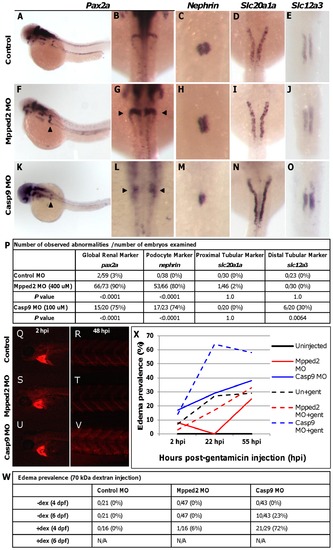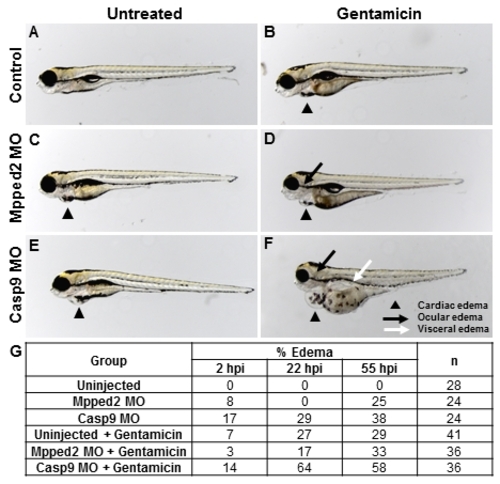- Title
-
Genome-wide association and functional follow-up reveals new Loci for kidney function
- Authors
- Pattaro, C., Köttgen, A., Teumer, A., Garnaas, M., Böger, C.A., Fuchsberger, C., Olden, M., Chen, M.H., Tin, A., Taliun, D., Li, M., Gao, X., Gorski, M., Yang, Q., Hundertmark, C., Foster, M.C., O'Seaghdha, C.M., Glazer, N., Isaacs, A., Liu, C.T., Smith, A.V., O'Connell, J.R., Struchalin, M., Tanaka, T., Li, G., Johnson, A.D., Gierman, H.J., Feitosa, M., Hwang, S.J., Atkinson, E.J., Lohman, K., Cornelis, M.C., Johansson, A., Tönjes, A., Dehghan, A., Chouraki, V., Holliday, E.G., Sorice, R., Kutalik, Z., Lehtimäki, T., Esko, T., Deshmukh, H., Ulivi, S., Chu, A.Y., Murgia, F., Trompet, S., Imboden, M., Kollerits, B., Pistis, G., Harris, T.B., Launer, L.J., Aspelund, T., Eiriksdottir, G., Mitchell, B.D., Boerwinkle, E., Schmidt, H., Cavalieri, M., Rao, M., Hu, F.B., Demirkan, A., Oostra, B.A., de Andrade, M., Turner, S.T., Ding, J., Andrews, J.S., Freedman, B.I., Koenig, W., Illig, T., Döring, A., Wichmann, H.E., Kolcic, I., Zemunik, T., Boban, M., Minelli, C., Wheeler, H.E., Igl, W., Zaboli, G., Wild, S.H., Wright, A.F., Campbell, H., Ellinghaus, D., Nöthlings, U., Jacobs, G., Biffar, R., Endlich, K., Ernst, F., Homuth, G., Kroemer, H.K., Nauck, M., Stracke, S., Völker, U., Völzke, H., Kovacs, P., Stumvoll, M., Mägi, R., Hofman, A., Uitterlinden, A.G., Rivadeneira, F., Aulchenko, Y.S., Polasek, O., Hastie, N., Vitart, V., Helmer, C., Wang, J.J., Ruggiero, D., Bergmann, S., Kähönen, M., Viikari, J., Nikopensius, T., Province, M., Ketkar, S., Colhoun, H., Doney, A., Robino, A., Giulianini, F., Krämer, B.K., Portas, L., Ford, I., Buckley, B.M., Adam, M., Thun, G.A., Paulweber, B., Haun, M., Sala, C., Metzger, M., Mitchell, P., Ciullo, M., Kim, S.K., Vollenweider, P., Raitakari, O., Metspalu, A., Palmer, C., Gasparini, P., Pirastu, M., Jukema, J.W., Probst-Hensch, N.M., Kronenberg, F., Toniolo, D., Gudnason, V., Shuldiner, A.R., Coresh, J., Schmidt, R., Ferrucci, L., Siscovick, D.S., van Duijn, C.M., Borecki, I., Kardia, S.L., Liu, Y., Curhan, G.C., Rudan, I., Gyllensten, U., Wilson, J.F., Franke, A., Pramstaller, P.P., Rettig, R., Prokopenko, I., Witteman, J.C., Hayward, C., Ridker, P., Parsa, A., Bochud, M., Heid, I.M., Goessling, W., Chasman, D.I., Kao, W.H., and Fox, C.S.
- Source
- Full text @ PLoS Genet.
|
Mpped2 and casp9 knockdowns result in defective kidney development. (A–E) Whole mount in situ hybridization in control embryos demonstrates normal expression of the global kidney marker pax2a (A: lateral view; B: dorsal view), the glomerular marker nephrin (C), and the tubular markers slc20a1a (proximal tubule, D), and slc12a3 (distal tubule, E) at 48 hours post fertilization (hpf). (F–J) Mpped2 morpholino (MO) knockdown embryos develop glomerular gene expression defects (F–H, arrowheads), but tubular marker expression is normal (I, J). (K–O) Casp9 MO knockdown embryos demonstrate reduced glomerular gene expression (K–M, arrowheads) and shortened distal tubules (O). (P) Quantification of observed abnormalities per number of embryos reveal significant differences in expression of pax2a and nephrin in response to knockdown of both mpped2 and casp9 (Fisher′s exact test). (Q–V) Embryos were injected with control, mpped2, or casp9 MO at the one-cell stage and subsequently injected with 70,000 MW fluorescent rhodamine dextran at 80 hpf. Dextran fluorescence was monitored over the next 48 hours. All dextran-injected embryos show equal loading into the cardiac sinus venosus at 2 hours post-injection (2 hpi/82 hpf; Q, S, U). Compared to control MO-injected embryos (R) and mpped2 knockdown embryos (T), knockdown of casp9 resulted in reduced dextran clearance at 48 hpi as shown by increased trunk fluorescence (V). (W) Casp9 knockdown results in increased susceptibility to edema formation both spontaneously (-dex) (P value = 0.0234, Fisher′s exact test) and after dextran challenge (+dex) (P value<0.0001). Embryos injected with both MO and dextran did not survive to 6 dpf (N/A). (X) Edema develops earlier and with higher frequency in casp9 morphants following injection of the nephrotoxin gentamicin. EXPRESSION / LABELING:
PHENOTYPE:
|
|
Ddx1 knockdown does not affect kidney gene expression. (A–E) Uninjected control embryos show normal kidney development as demonstrated by in situ hybridization for the renal markers pax2a (A, B), nephrin (C), slc20a1a (D) and slc12a3 (E). (F–J) Ddx1 morpholino(MO)-injected embryos do not show significant changes in renal marker expression. (K) Number of observed abnormalities per number of embryos examined at 400 uM MO injection for renal gene expression analysis. |
|
Casp9 and mpped2 knockdown embryos are more susceptible to gentamicin-induced kidney injury. Compared to control embryos (A), casp9 and mpped2 knockdown embryos develop edema at 103 hpf (C, E), suggestive of a renal defect. When injected with gentamicin, a nephrotoxin that reproducibly induces edema in control embryos (B), mpped2 and casp9 knockdown embryos develop edema earlier, more frequently, and in a more severe fashion (D, F). Whereas control embryos primarily develop cardiac edema, mpped2 and casp9 knockdown embryos display cardiac (arrowhead), ocular (black arrow), and visceral (white arrow) edema, demonstrating that mpped2 and casp9 knockdown predisposes embryos to kidney injury. (G) Quantification of edema prevalence in control, mpped2, and casp9 knockdown embryos 2, 22, and 55 hours post-injection (hpi) of gentamicin. These numbers are presented graphically in Figure 2X. PHENOTYPE:
|



